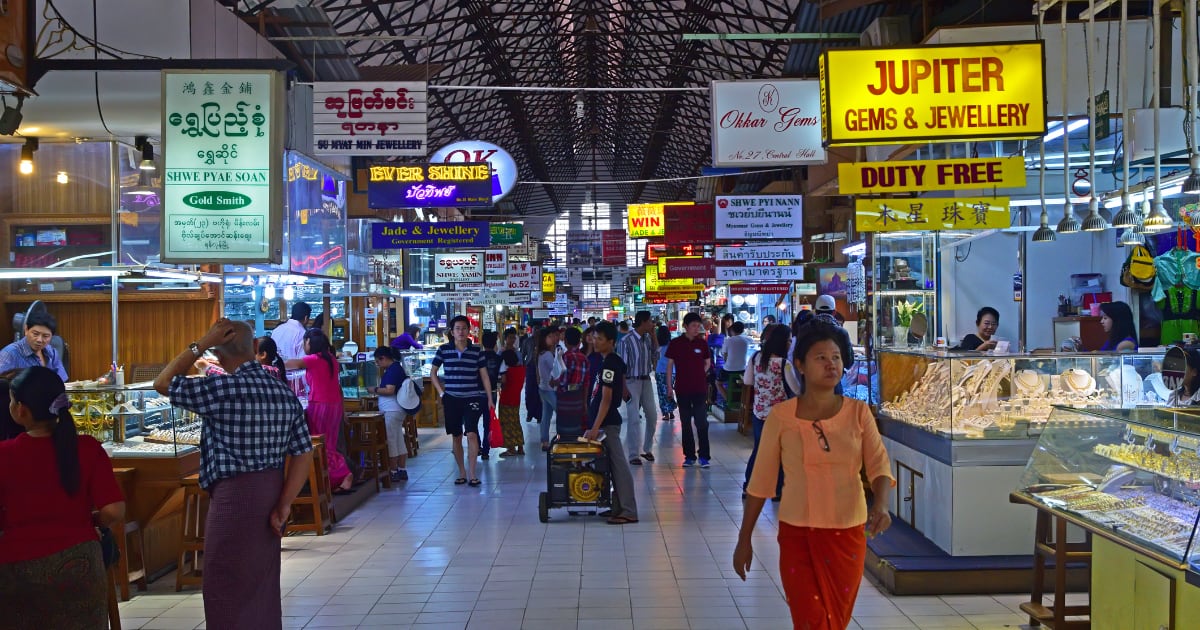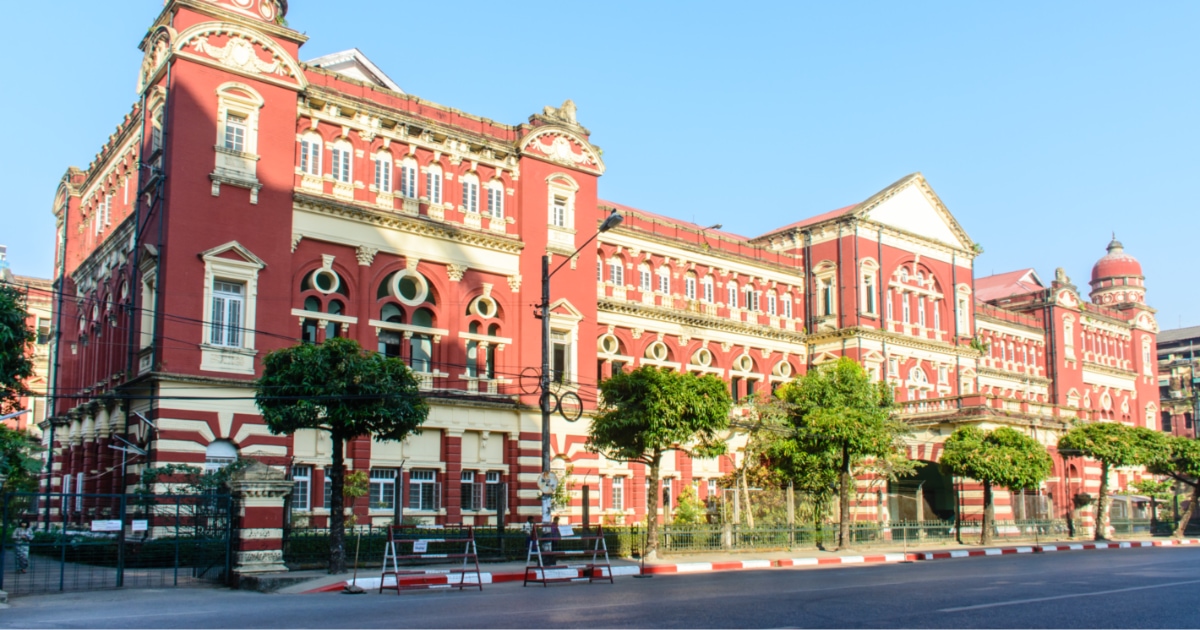Telecomuncations in Myanmar
Over the last seven years Myanmar telecoms market has been transformed. Formerly one of the most underdeveloped markets in Asia, Myanmar has experienced unprecedented growth in mobile and mobile broadband services. Foreign investment has been the driving force behind a telecoms boom that is reshaping the economy, creating downstream opportunities and a platform for innovation. While fixed broadband penetration remain extremely low, Myanmar’s mobile market has become increasingly dynamic and competitive. Since 2014, Myanmar’s three largest telcos, MPT, Ooredoo and Telenor have served in excess of 50 million mobile subscribers giving Myanmar a mobile penetration rate of close to 95%. After Mytel became the fourth telecom operator in January 2017, there are four telecom operators in Myanmar at present. Strong growth is predicted in the near term, with telco’s delivering ever faster network speeds and connectivity. As the telecoms business is now a potential one when inviting further foreign investments, a sector should be watched in the future.
The Telecoms Law
The Telecommunications Law No. 31/2013 (Telecoms Law) was introduced on 8 October 2013, providing a modern regulatory framework for Myanmar’s telecommunications sector. The Telecoms Law regulates network facility services, network service providers and application service providers. This Law was then amended on 29 August 2017.
The Licensing Rules
The Telecoms Law is supplemented by Notification No. 16/2014 (Licensing Rules) issued by the Ministry of Communications and Information Technology (now Ministry of Transport and Communications) of the Union Government (MCIT), which introduced rules and regulations in respect of licensing as well as the implementing regulations to the Telecoms Law. The Telecoms Law and Licensing Rules have been augmented by the following legislation
|
Legislation |
Date |
|
|
Notification No. 1/2015 |
Interconnection and Access Rules |
6 January 2015 |
|
Notification No. 21/2015 |
Telecoms Competition Rules |
9 June 2015 |
|
Notification No. 49/2015 |
The Numbering Rules |
3 December 2015 |
|
Notification No. 10/2016 |
The Spectrum Rules |
7 March 2016 |
|
MCIT reorganized as Ministry of Transport and Communications (MOTC) |
||
|
MOTC Notice |
Technical Specifications for Short Range Device |
17 July 2016 |
|
MOTC Notice |
Guidelines on the Provision of International Gateway Services |
8 September 2016 |
|
MOTC Notice |
Telecommunications Numbering Plan |
31 January 2017 |
|
MOTC Notice |
The Technical Specification and Quality of Service for International Gateway Service |
5 April 2017 |
|
MOTC Notice |
Draft Myanmar Communications Regulatory Commission Law (MCRC Law) |
15 May 2017 |
|
Law No – 26, 2017 |
Amendments to the Telecommunication Law |
18 August 2017 |
|
MOTC Notice |
Amendments to Rules of the Licensing Rules |
3 September 2018 |
Telecoms Regulation
The Posts and Telecommunications Department (Department) under the Ministry of Transport and Communications is the telecommunications regulator in Myanmar.
The responsibilities of the Department include:-
- the issuance and renewal of service provider licences;
- regulation of the frequency spectrum and numbering plans;
- ensuring consumer protection;
- inspection and supervision of service providers;
- initiating administrative actions against service providers.
As part of sector reforms, the MOTC is authorised to establish the National Telecommunications Advisory Committee
- To make recommendations on technical standards, consumer protection and strategic development of the telecommunications sector in Myanmar; and
- To hear administrative appeals against the MOTC’s decisions.
Investment Regime
Pursuant to Notification No. 13/2017 issued by the Myanmar Investment Commission pursuant to the Myanmar Investment Law (MIL) the manufacture of telecommunications equipment, installation of telecommunication lines, the construction of telecommunication towers, the conducting of business related to regional fiber lines and the provision of telecommunication services are classified as ‘promoted’ economic activities. Investors can avail of the full range of incentives contained in the MIL.
Foreign ownership
Foreign entities are permitted to apply for licences under the Telecoms Law. The Licensing Rules define a foreign entity as a legal entity in which a non-Myanmar citizen or foreign company, holds either a direct or indirect, controlling interest of more than 50% of the interest in the entity. Note this definition differs from the definition of a ‘foreign company’ under the Myanmar Companies Law (MCL). According to the MCL, foreign company means a company with a foreign ownership of more than 35%.
Telecoms license holders|
Licensee |
Awarded |
Ownership |
Term |
Subscribers (millions) |
|
MPT |
March 2015 |
State owned enterprise under the supervision of Ministry of Transport and Communication. MPT entered into a Joint Operations Agreement with KSGM, whose ultimate ownership is held by KDDI Corporation (Japan) and Sumitomo Corporation (Japan) |
15 years |
25 |
|
Telenor |
February 2014 |
Telenor ASA (Norway) |
15 years (renewable for additional 15 years) |
19 |
|
Ooredoo |
February 2014 |
Ooredoo Group (Qatar) |
15 years (renewable for additional 15 years) |
9 |
|
MyTel |
January 2017 |
Joint-venture between the Viettel Group (Vietnam) (49%), Star High Telecom Limited (28%) (Myanmar) and Myanmar National Telecom Holding Company (23%) |
15 years (renewable for additional 15 years) |
1 |
Licensing Regime
Service licenses
In order to provide network facility services, network services or application services, local or foreign invested companies must obtain a service license (Service License) from the Department.
According to the Licensing Rules, the types of service license are as follows:
- Network Facilities Service (Individual) License (NFSI),
- Network Facilities Service (Class) License (NFSC),
- Network Service License (NS) and
- Application Service License (AS).
In addition, the telecommunications equipment license is required to be obtained for using and possessing of certain telecommunications equipment.
Network Facilities Service (Individual) License (NFSI)
The “NFSI” license is a top level licence permitting the licence holder all activities engaged in NFSI Licence, NFSC Licence, NS Licence and AS Licence. The activities contained in NFSI Licence cover the activities for construction, maintenance and operation of terrestrial fixed line transmission facilities; terrestrial radio transmission facilities; mobile base station facilities; submarine cable facilities; international Gateway Services facilities; satellite earth station facilities; and other satellite facilities located in the Union of Myanmar providing capabilities for transmission of Telecommunications Services.
Network Facilities Service (Class) License (NFSC)
The “NFSC” License permits for the activities included in the NFSC Licence but the licence holder is entitled to apply for NS License and AS License. The NFSC License covers the activities relating to construction, deployment and maintenance of towers; masts; ducts; trenches; poles; dark fiber; and radio equipment installed to send, receive and route communications. In addition, the NFSC License holder is entitled to lease its telecommunication infrastructures to NFSI License holder or other third parties (non-license holders).
Network Service License (NS)
The “NS” License only permits the activities included in NS License and AS License. The NS License allows for constructing and maintaining switches, routers and processing equipment, but limited to telecom network facility. The NS license also covers resale of wireline connectivity services; resale of terrestrial wireless connectivity services; international and domestic network transport and switching services, and resale of International Gateway Services.
Application Service License (AS)
The AS License permits license holders to engage in only those activities authorized under the AS License. The activities permitted in AS License are public payphone services; public switched data services; audio text hosting services provided on an opt-in basis; directory services; internet service provider services; public access center services; messaging services; private line voice and/or data services; and value-added services.
Licensing Procedures
|
Procedures for NFSI and NS Licenses |
|
|
Procedures for AS and NFSC Licenses |
|
The Spectrum Rules
According to the Spectrum Rules, the procedure for authorising the right to use radio spectrum, conditions for authorisation of spectrum rights and spectrum fees shall be determined by the Department after public consultation.
Radio spectrum may be issued by auction, by tender or by a fixed price. Spectrum licenses may only be transferred or assigned upon prior written approval from the Department. The transferee will need to comply with any relevant requirements as stipulated in the Telecoms Law and the applicable regulations.







